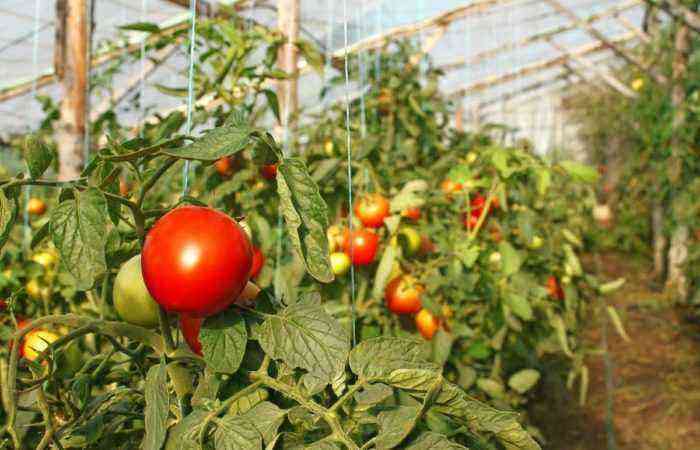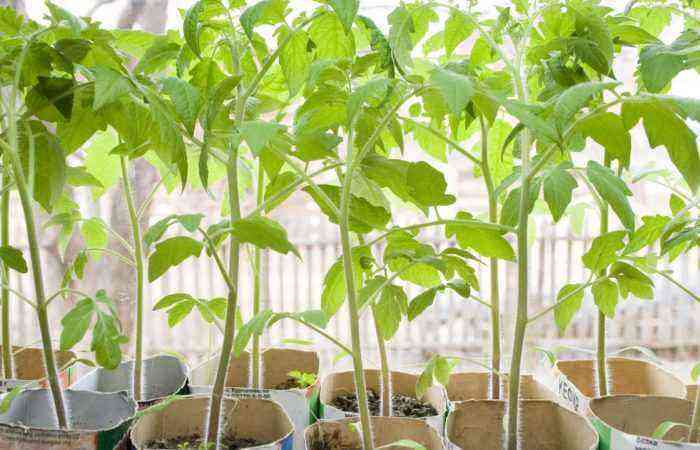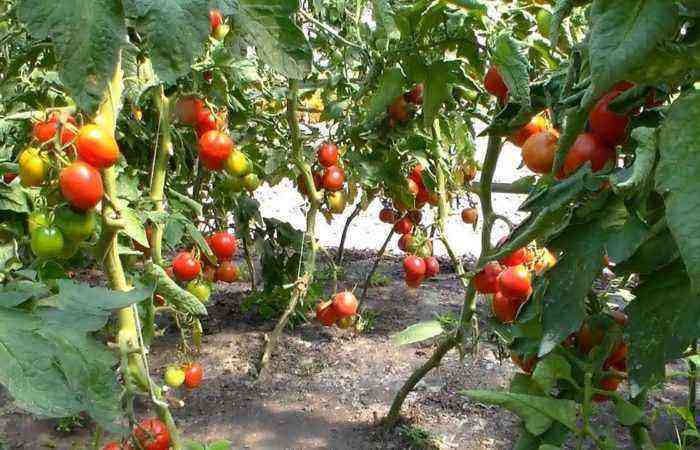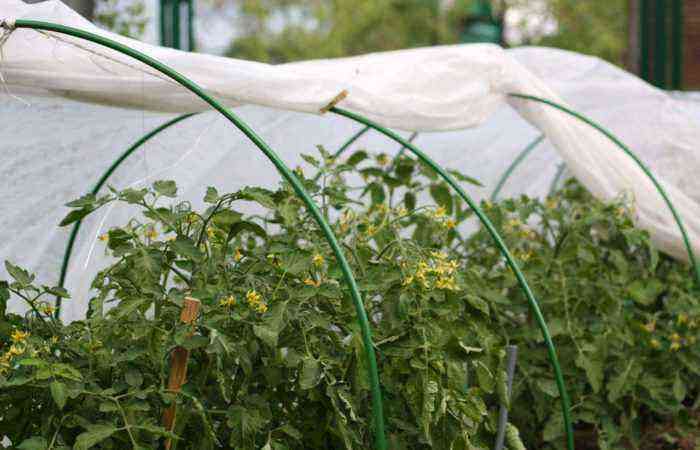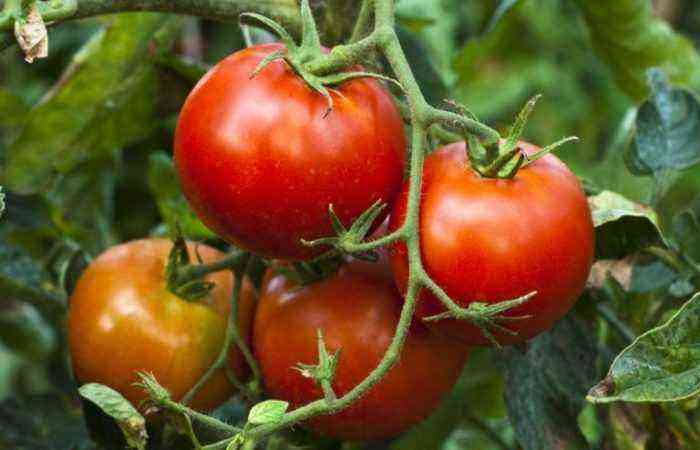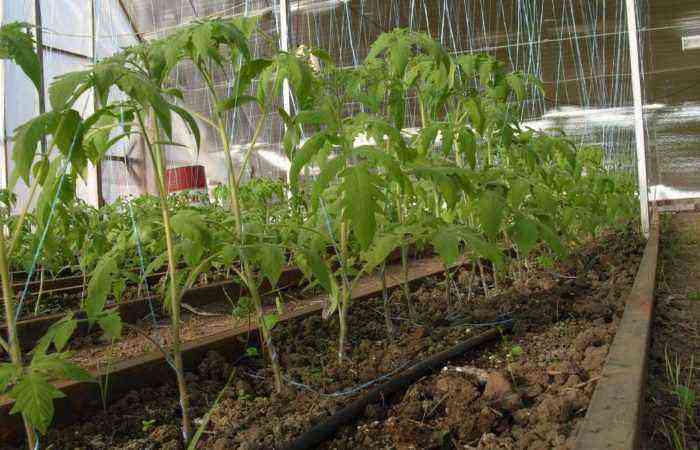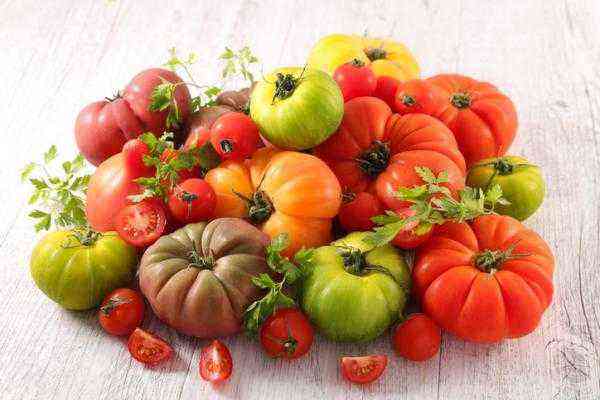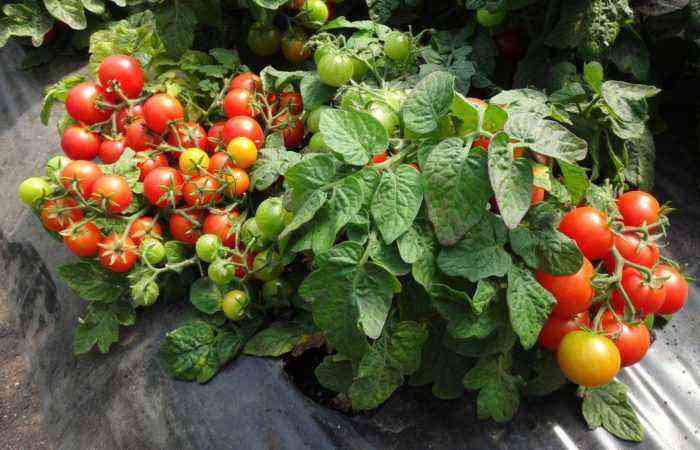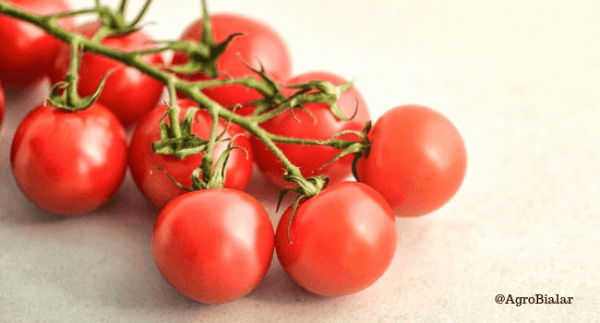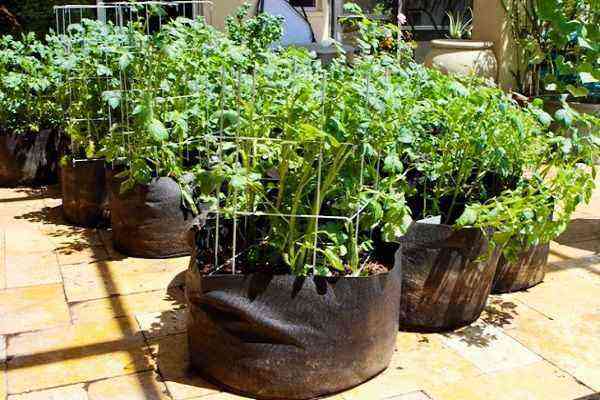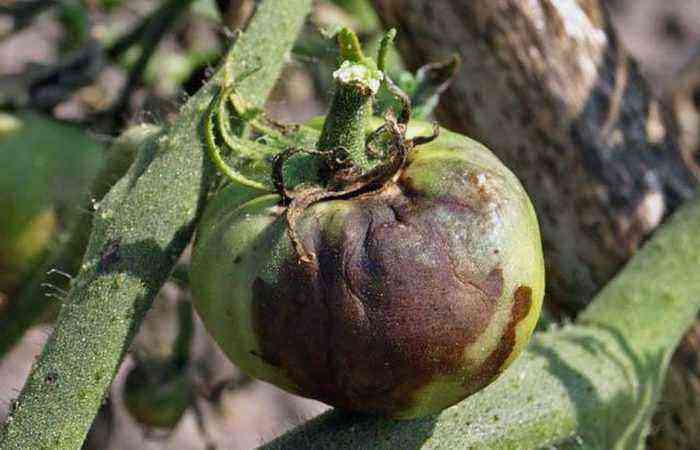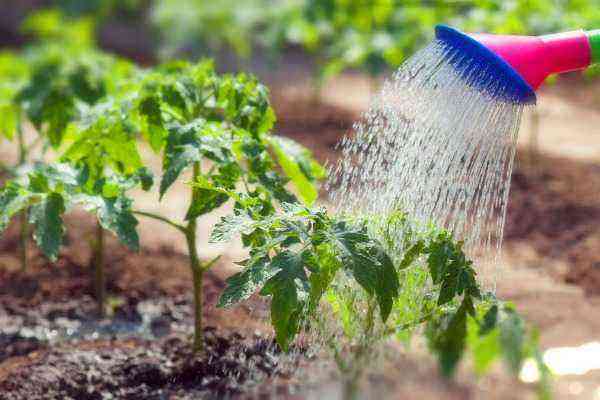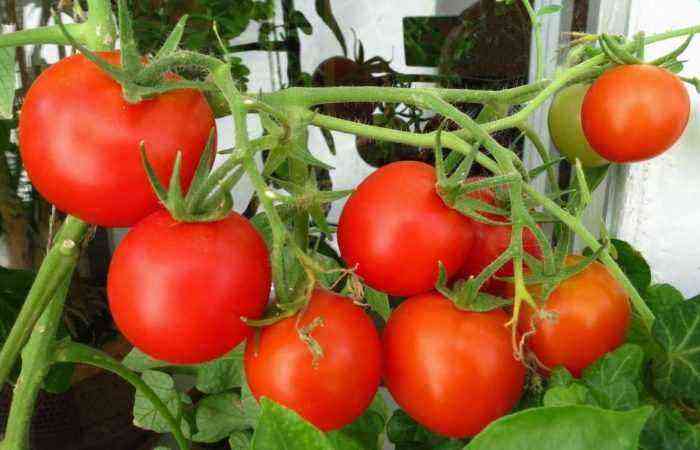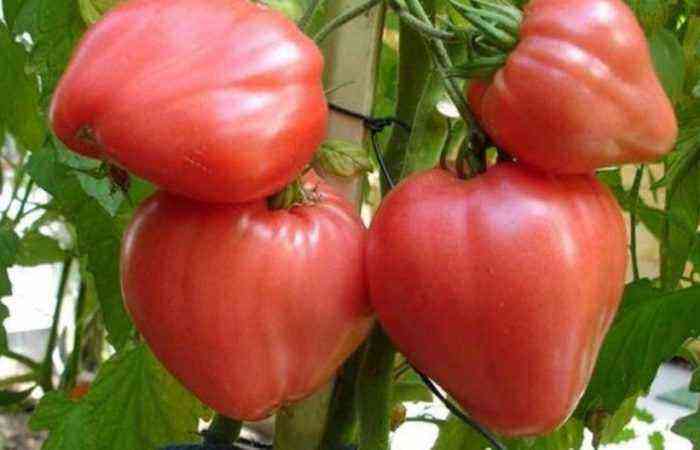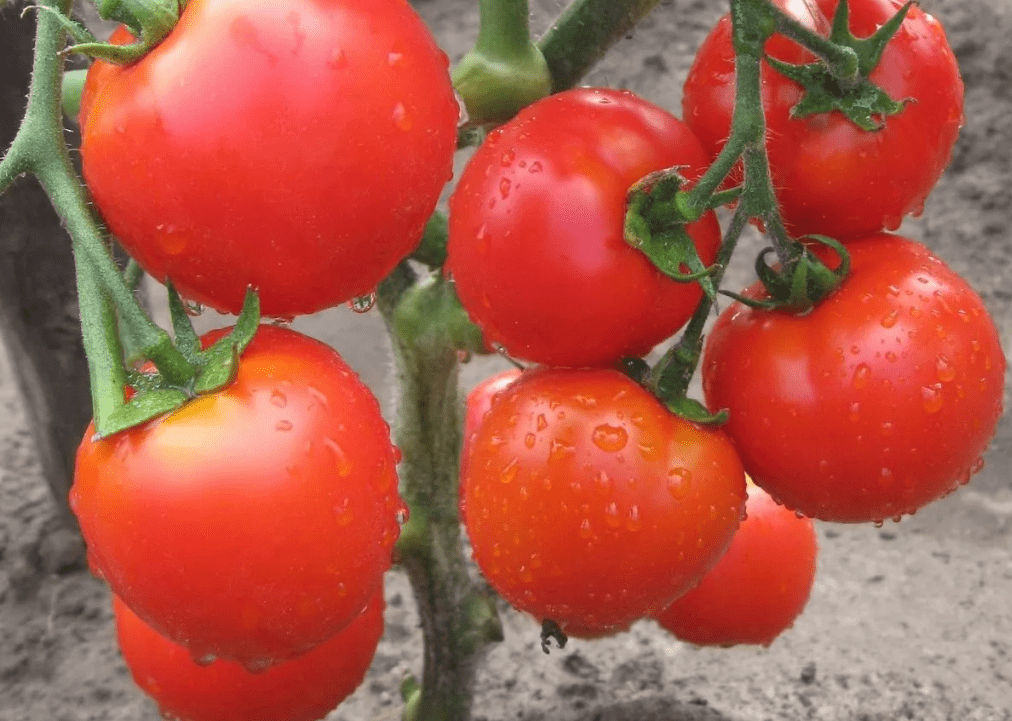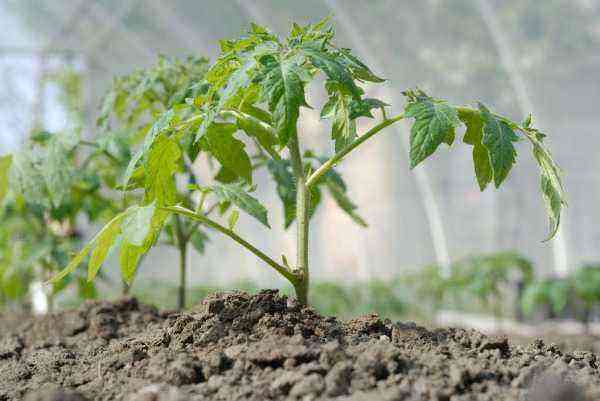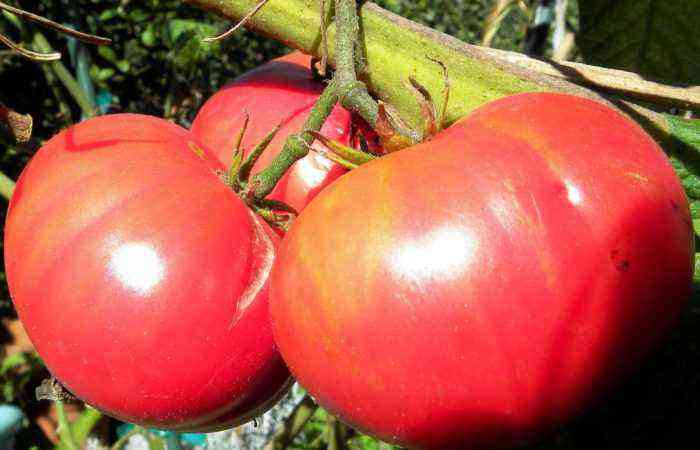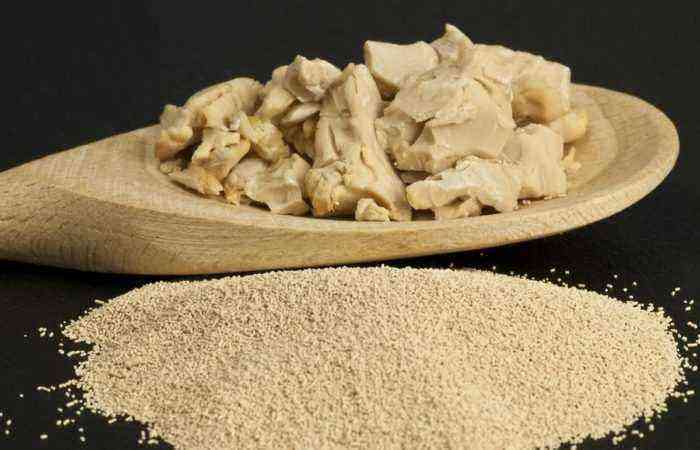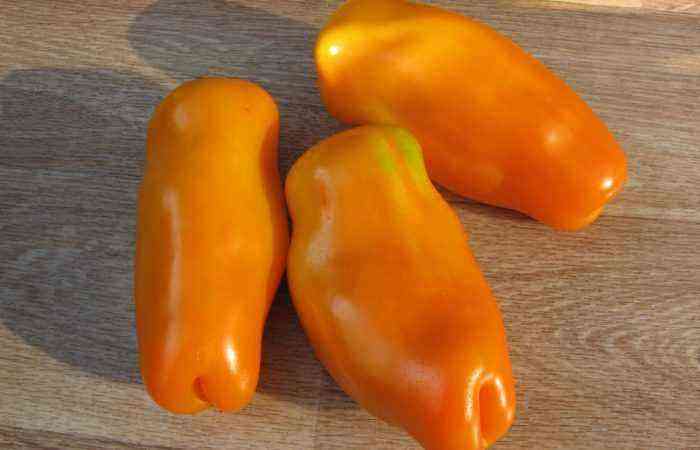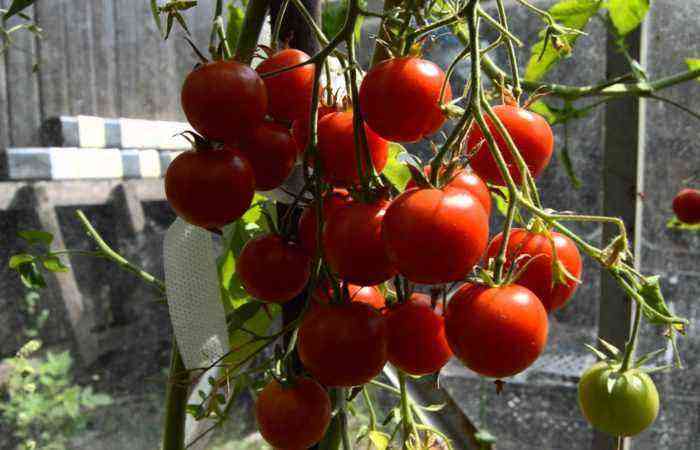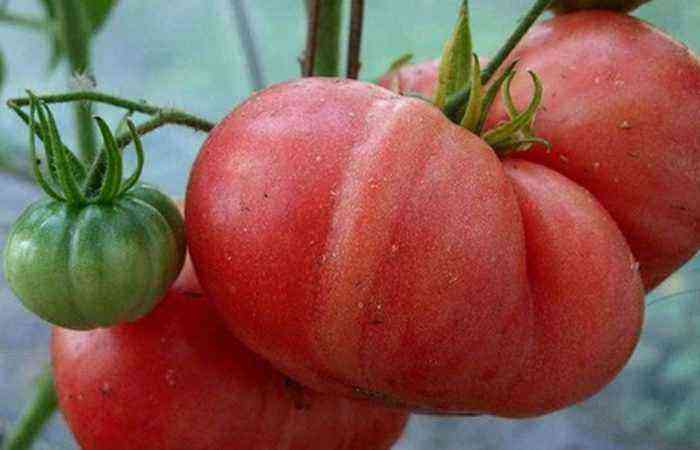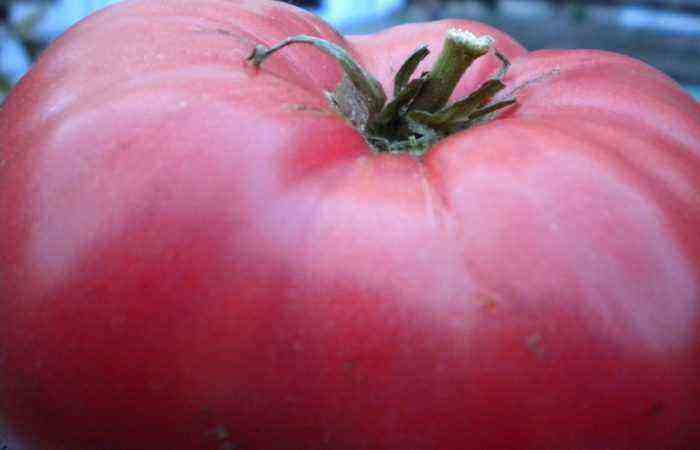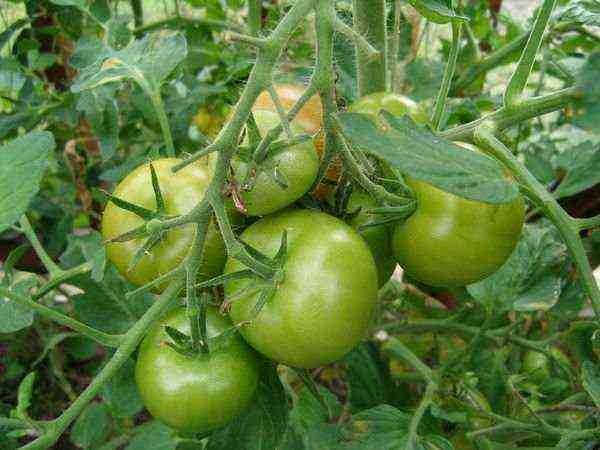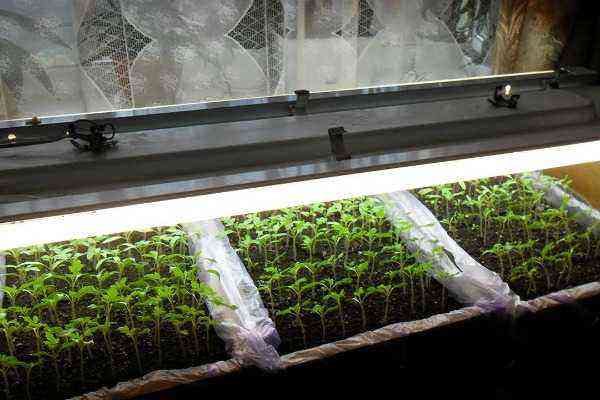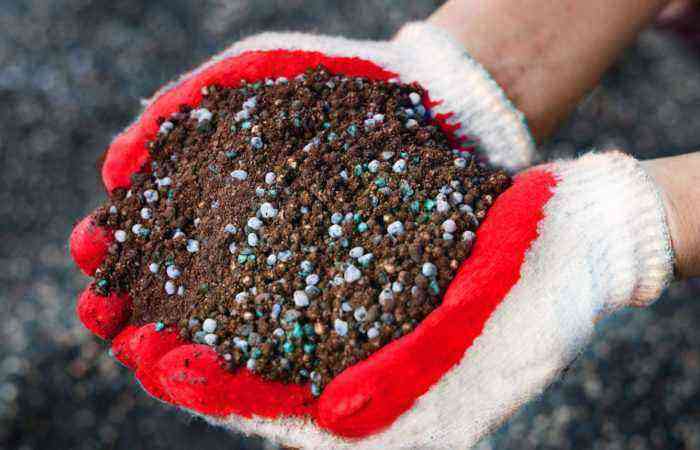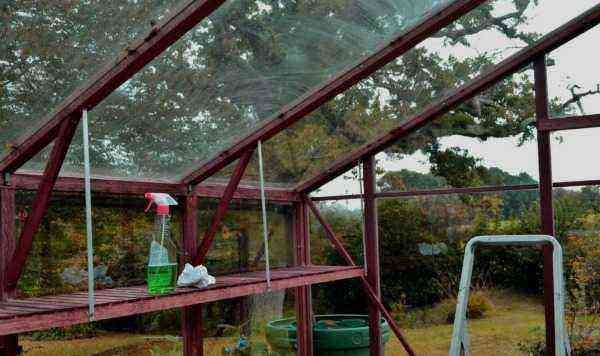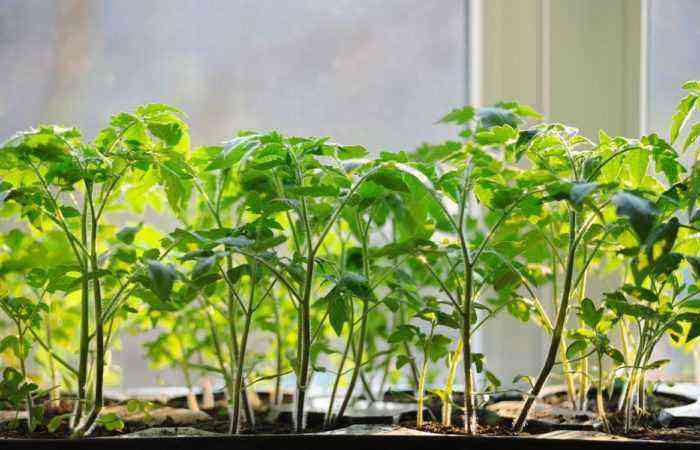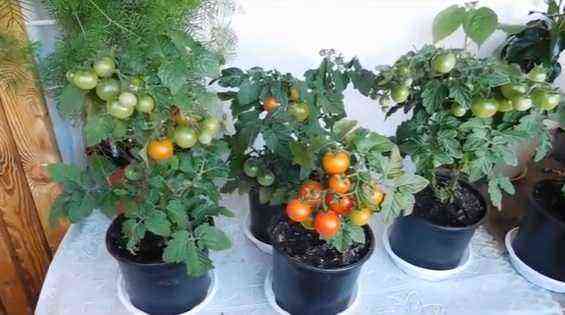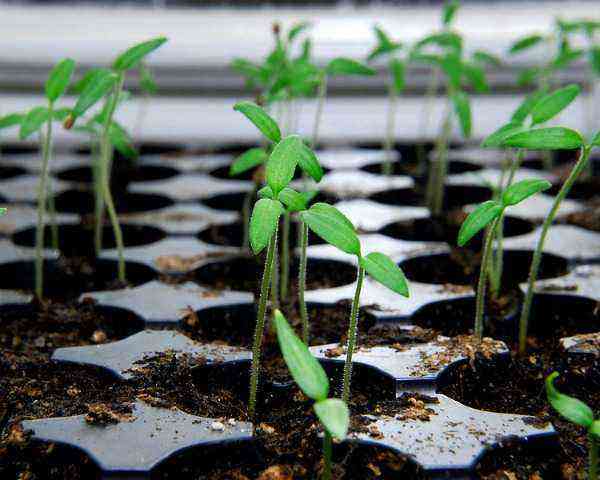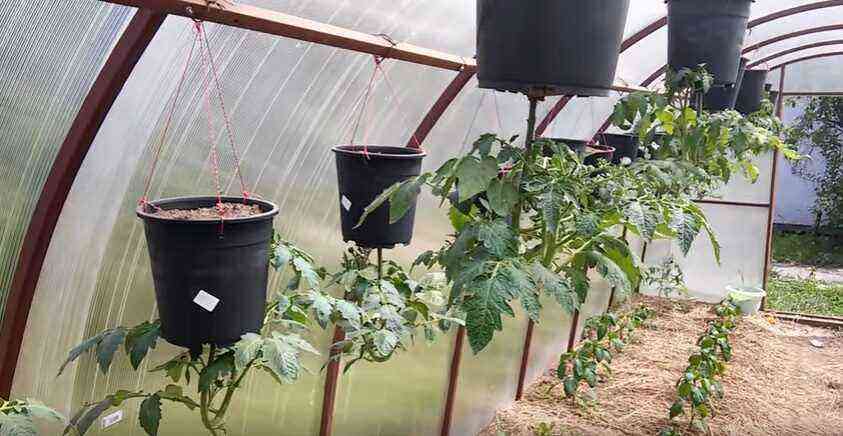Like any disease, gray mold is easier to prevent than to treat. If, despite prevention, foci of the disease have appeared, it is very important to take measures to treat the affected plants and prevent the spread of fungal spores. To do this, you need to know the signs of the disease, the causes of its occurrence and ways to combat the disease.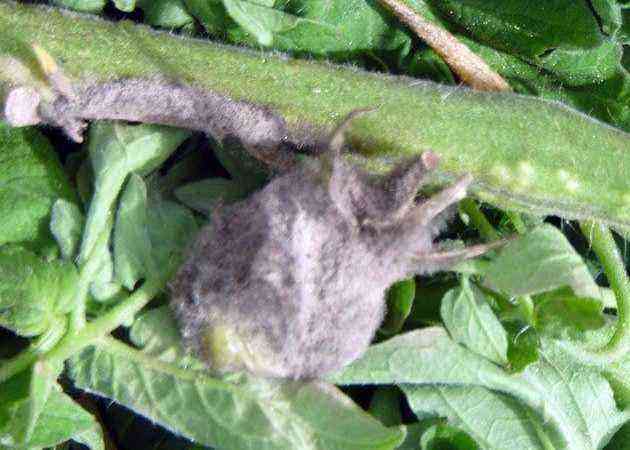
Gray rot of tomatoes
This is a fairly serious fungal disease, which is often called a wound parasite. The causative agent is the fungus V.cinerea. Other vegetable crops can act as a source of infection: lettuce, cucumbers, carrots and others.
Signs of the disease
At the initial stage, an oblong, brownish spot with a gray tint is formed on the damaged area of the stem or shoot. Within 5-7 days, the spot spreads along the stem, as if encircling it around. Then the spot begins to lighten from the center to the edges, becoming covered with stripes in the form of rings.
The disease develops inside the stem, the affected part dies, the vegetative organs located above this area do not receive nutrition and wither.
How it spreads
Most often, injured areas of the stem, shoots and roots located above the soil surface are exposed to infection. The spores of the fungus are spread by air, they scatter when watering and processing the affected plants. The plaque of conidia, as it were, dusts when shaken and settles on plants, accumulating on plant residues in the form of black sclerotia, capable of maintaining viability for a long time.
Conditions for the development of gray rot in tomatoes
The disease appears as a result of the coincidence of several conditions:
- Timing of illness. With the onset of pinching of plants, open wounds appear that can be infected, so the risk of developing the disease increases during the period of fruit formation.
- Temperature. At the initial stage, the disease develops slowly, but if the air temperature is low, gray rot begins to progress rapidly.
- Humidity. The disease develops especially intensively in conditions of high humidity and poor ventilation.
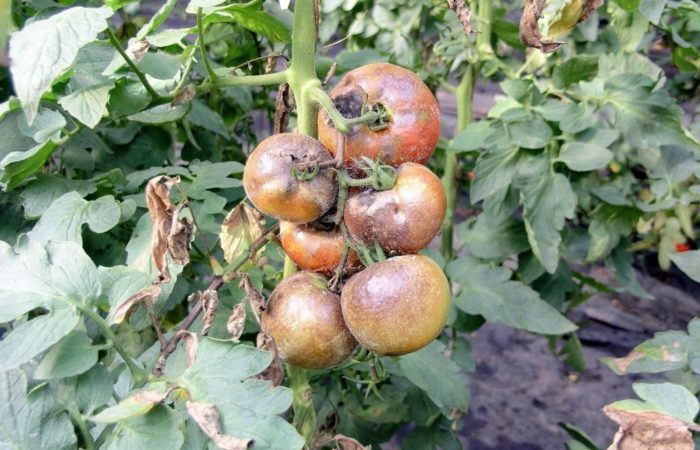
How to treat tomatoes for gray rot
Preparations
To protect tomatoes from rot, it is necessary to use various means.
- Pasta with fungicides.
A paste of glue and preparation is applied directly to the infected, injured area, capturing another 2-3 cm of healthy tissue. The composition of the paste can be as follows:
- glue CMC 300-350 g;
- water −10 l;
- fungicide (Rovral) – 35-40 g.
- chalk is added to form a pasty preparation.
Other antifungal drugs can be used to make a paste.
- Topsin M.
Antimycotic drug with systemic and contact action, destroys and prevents the development of fungal infections. Available in powder or emulsion form. The solution is prepared based on the manufacturer’s recommendations, thoroughly mixed and sprayed on the plants. The consumption rate of the solution is about 1-2 liters per 10 square meters. m.
The drug is quite toxic to humans, so precautions must be observed. 1-2 sprayings are carried out with an interval of 1-2 weeks during the growing season until flowering.
- Byleton.
The drug is not registered in the fight against gray rot, but successfully copes with it. It is a systemic fungicide, that is, it penetrates the plant within 2-4 hours after treatment and retains its protective properties for 2-4 weeks. To prepare the solution, it is necessary to dissolve 10 g of the drug in 10 liters of water. In protected ground per 1 ha, 1,0-1,5 kg of the drug is used.
- Euparen multi.
Contact drug. Blocks sporulation of phytopathogenic fungi. In the absence of rain, it retains its protective effect for 10-12 days. To prepare a solution, 15-20 g of the drug is dissolved in 10 liters of water. Sprayed in cloudy, dry weather without wind. The surface of the plant is completely moistened with a solution. Multiplicity of treatments – 2-3.
The drug is dangerous for bees. It is not recommended to use together with Bordeaux liquid and insecticidal preparations.
- Trichodermin suspension.
It is a biological remedy. The drug is used for spraying plants and smearing damaged surfaces, cuts after removing leaves and stepchildren. Weeping spots are also smeared, which inhibits the appearance of secondary foci. Spraying is carried out before the start of fruit formation in the morning. The drug is effective at the initial stage of the development of the disease.
- Glyocladin.
It has a similar effect with Trichomedrin, and although smearing spots is laborious, the result is good, and the effect is long-lasting.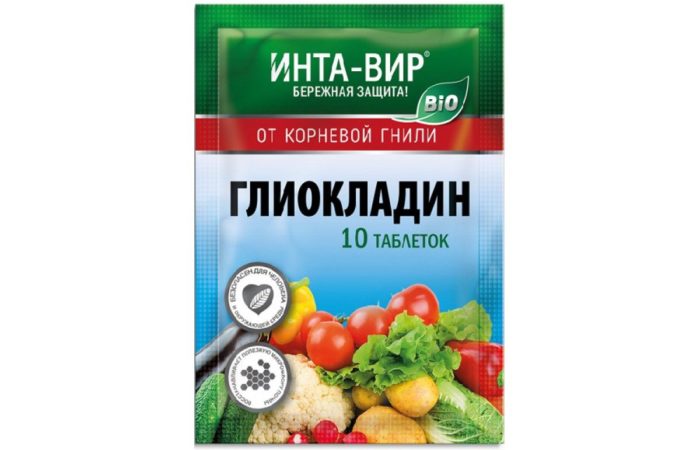
- Gamair.
It is used for spraying plants with an interval of 1-2 weeks with a solution prepared from 1 tablet dissolved in 1-1,5 liters of water.
Folk remedies in the fight against gray rot
In addition to chemicals, there are folk remedies to combat infection:
In 10 liters of water add 5 g of the drug. Spray plants before flowering.
For a solution, 80 g of baking soda is mixed in 10 liters of water. Used for spraying plants before fruiting.
Not only prevents the development of the disease, but also stimulates the growth of shoots, improves the formation of ovaries and the taste of fruits, strengthens the immune system. A solution of boric acid (2 g per 10 liters of water) is used both before and during the flowering period for foliar spraying. It can be used during fruit ripening to accelerate ripening and accumulation of sugars.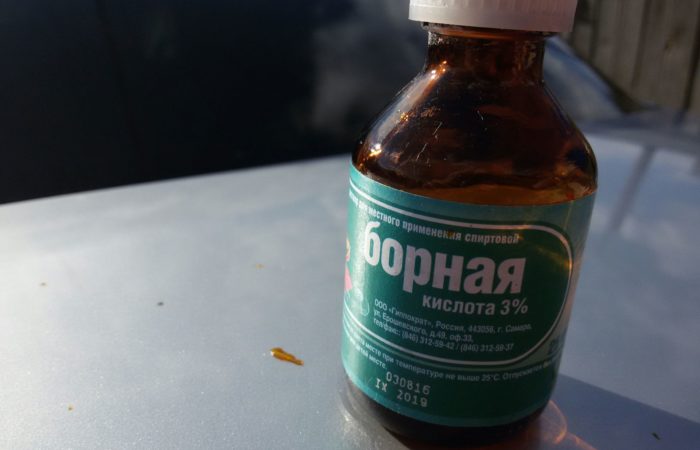
How to deal with the disease in the greenhouse and in the open field
- We process seedlings.
Good preventive measures against gray rot, which are sprayed before planting, are:
- infusion of garlic (you can shoot it), for which 2 g of chopped garlic are infused in 10 liters of water for 30 days;
- 0,5% solution of Bordeaux liquid.
- In a greenhouse.
Maintaining low humidity in the greenhouse, optimal temperature and regular ventilation are the main part of preventive measures against gray rot. For prevention, treatment with a solution of Trichodermin suspension is carried out.
When foci of the disease are detected, pastes with fungicides and treatment of plants with chemicals are used.
- In open ground.
Treatment with sodium humate and Trichodermin suspension after removing leaves, shoots and weeping spots will help to reduce the risk of spreading diseases with gray rot by one and a half to two times.
You can see what gray rot looks like on tomatoes, you can learn about the possible causes of the appearance from the video.
Tillage after infected tomatoes
After treating damaged plants, it is also necessary to treat the area in order to avoid re-infection.
Considering that black sclerotia of fungus spores accumulate in plant debris by the end of the growing season, their cleaning must be carried out carefully and completely disposed of. Plant residues with signs of disease should not be used in compost heaps.
Includes fumigation of soils, substrates for greenhouses, steaming of soils. For disinfection, the soil is shed with a solution of one of the preparations (Alirin, Gliocladin, Barrier and others), which have a detrimental effect on the preserved spores of the fungus.
In autumn, after removing plant residues and disinfecting the soil, dolomite flour or chalk is added and deep digging of the soil is carried out.
In protected ground, it is mandatory to disinfect structures, glazing, tools and materials. You can use fumigation by burning sulfur briquettes.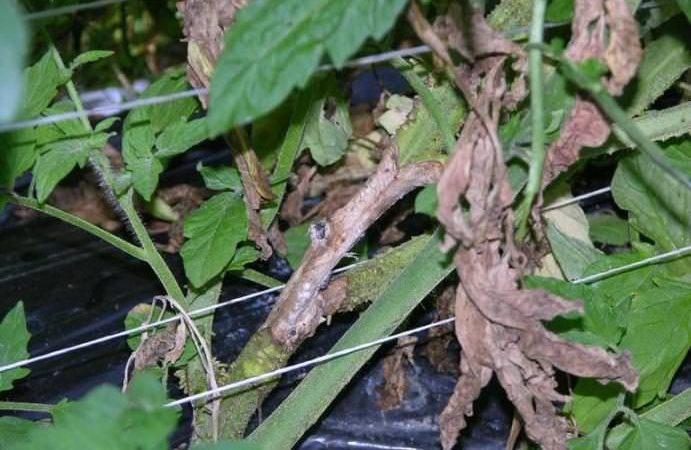
Tomato varieties resistant to gray rot
There are no tomato varieties that are completely resistant to gray rot, but hybrid plants resist the disease more steadfastly, such as:
Early, indeterminate, up to 2 m high, with high palatability, without greenery at the stalk and large fruits (more than 150 g). It sets fruits well in rather difficult conditions. Recommended for growing in unheated greenhouses with the formation of a single stem.
The variety is distinguished by high marketability and productivity, it is recommended for extended turnover in greenhouses. The plant is indeterminate, medium-sized, fruits weighing up to 100 g ripen in 105-110 days, they are distinguished by good taste, uniformity and high marketability.
Prevention
- Regular inspection of plants is carried out during the entire growing season in order to identify even minor foci of gray rot in order to carry out the treatment in a timely manner, preventing the fungus from spreading along the stem and not infecting neighboring plants.
- Compliance with crop rotation. Solanaceae can be returned to their original place no earlier than 3 years. Choose plants that are not susceptible to the disease as tomato precursors.
- Leaf cutting improves ventilation and removes excess moisture. Work is carried out in dry weather, in the morning, so that the wounds heal during the day. Watering should not be carried out immediately after the removal of leaves and pinching.
- Treatment with sodium humate, which is a biological growth regulator, strengthens the defenses of tomato, immunity, and accelerates the growth and ripening of fruits.
- Soil mulching is necessary to maintain soil moisture and prevent an increase in air in the greenhouse.
The success of measures to protect tomato from diseases directly depends on the timeliness of their implementation and an integrated approach at all stages, from soil preparation to the removal of plant residues.
